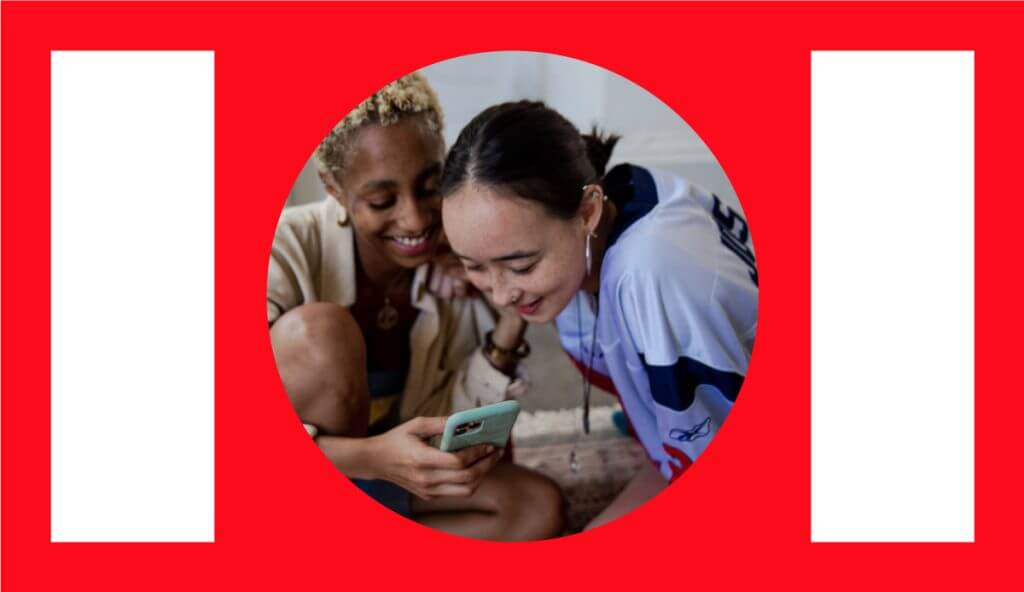
Mada Seghete, VP Marketing at Branch discusses why deep linking is one of the cornerstones of a successful mobile-first strategy.
Key Takeaways
- Deep linking helps prevent app abandonment thanks to enabling seamless, personalized user experiences regardless of channel or platform. Deep links take users directly to in-app content, removing friction from the app install process, and reducing the likelihood of drop-offs
- Good UX is crucial, 52% of people say a bad mobile experience makes them lose faith in a company. By using deep links anywhere you’d use a regular link, you’re ensuring that users have a good impression of the brand and therefore, are more likely to buy
- Deep links are also a critical part of user engagement and retention. The typical mobile app is deleted from a user’s device three days after install with an overall abandonment rate of 77%. Incorporating deep links allows you to bring inactive users directly back to the app
What are deep links and why are they important?
70% of time spent on digital media in the U.S. takes place on mobile, which means brands are already interacting with users who are primed to become app users. And app users are massively valuable. According to Branch’s Mobile Growth survey on average, app users spend $3.30 — more than three times as much as non-app users. However, getting someone to download your app, and then keep using it, is not always easy. That’s where deep links come in.
Deep links take users to a specific location within a downloaded app, so they don’t have to search for the desired content. Deep links can be used on any channel, not just the mobile web. For instance, if you wish to share a particular pair of shoes from the Cole Haan app with a friend, you can text them a deep link that instantly directs them to those shoes within the app. If your friend doesn’t have the app, a deferred deep link can first take them to an app store to download the app and then automatically to the shoes within the app. Without a deep link, your friend would have to search for the Cole Haan app on either the App Store or Play Store, launch the app, navigate to the homepage, locate the Search function, and then manually search for the same pair of shoes you intended to share.
Whether it’s from an email, a mobile website, or a social media platform, deep linking guides users from one channel to their desired content and ensures a smooth user experience. Good UX is crucial, 52% of people say a bad mobile experience makes them lose faith in a company. By using deep links anywhere you’d use a regular link, you’re ensuring that users have a good impression of the brand and therefore, are more likely to buy.
Deep links also simplify the process of conversion events such as making in-app purchases or signing up for subscriptions because deep links streamline the path for users to convert without any unnecessary steps in the journey.
The potential for deep links to supplement the user experience, enhance app discoverability, and increase downloads and retention — even drive revenue — makes them valuable from both a company and user standpoint. Marketing, developers, and product teams alike should leverage deep links to direct users to the appropriate destination, tailoring their journey based on their intent.
How can deep links prevent app abandonment?
Deep linking enables seamless, personalized user experiences — regardless of channel or platform. By taking users directly to in-app content, deep links remove friction from the app install process and reduce the likelihood of drop-offs.
Imagine you click a “25% off new items” promo in an email, get directed to the app store, download the app, then open it to find a home screen, not the new items or the promo. Most users won’t go through the trouble of navigating to the right page and hunting around for the original promo code. They’ll abandon the app before they even get started. Deep links remove these navigational headaches, boosting click-to-install rates and adoption.
Deep links are also a critical part of user engagement and retention. The typical mobile app is deleted from a user’s device three days after install with an overall abandonment rate of 77%. Incorporating deep links allows you to bring inactive users directly back to the app and opens the door to creative ways to entice users, like targeted smart banners on the mobile web or personalized incentives in re-engagement ads.
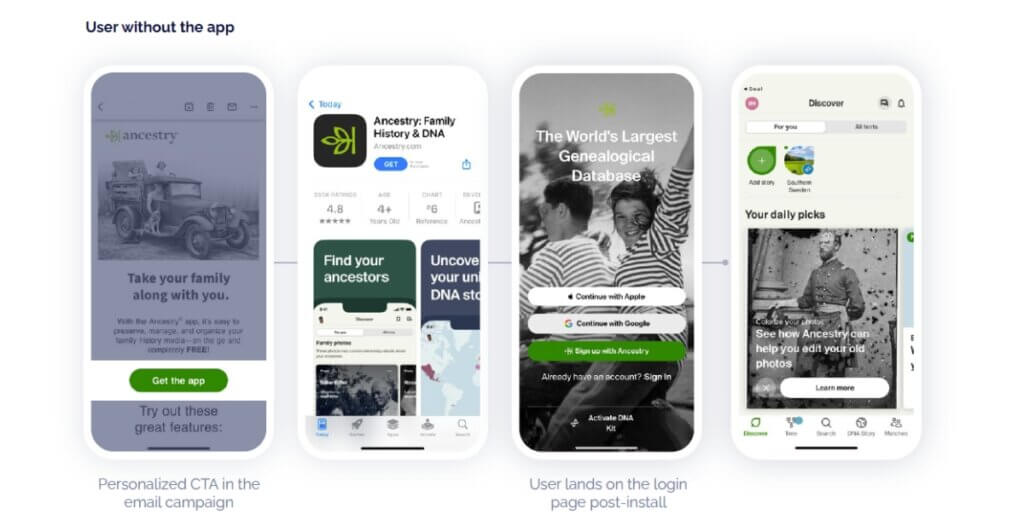
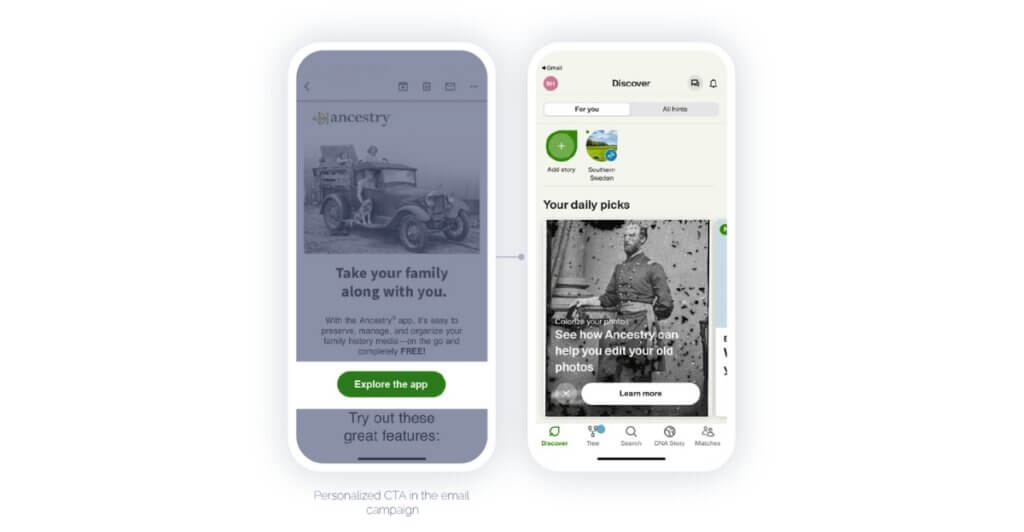
Branch client Ancestry® saw a three-times increase in app engagement when they added personalized deep links to their retention email campaigns.
How do deep links improve return on advertising spend (ROAS) or lifetime value (LTV)?
Here are two examples of how Branch clients are using deep links for ROAS and LTV optimization:
Firstly, 6thStreet is the largest omnichannel e-commerce destination that offers high-street fashion and beauty brands in the United Arab Emirates, Saudi Arabia, Kuwait, Oman, Bahrain, and Qatar. Their challenge was that with 75% of app traffic on iOS, the release of Apple’s App Tracking Transparency (ATT) framework substantially impacted their ad spend effectiveness and overall acquisition strategy. The users 6thStreet acquired through app install ads were less engaged app users at a higher cost than before and tended to uninstall the app shortly after onboarding.
The team moved from app-install ads to web-based ads with ad networks such as Meta, Google Ads, and TikTok. This allowed them to redirect traffic from the ads to their website instead of the app stores.
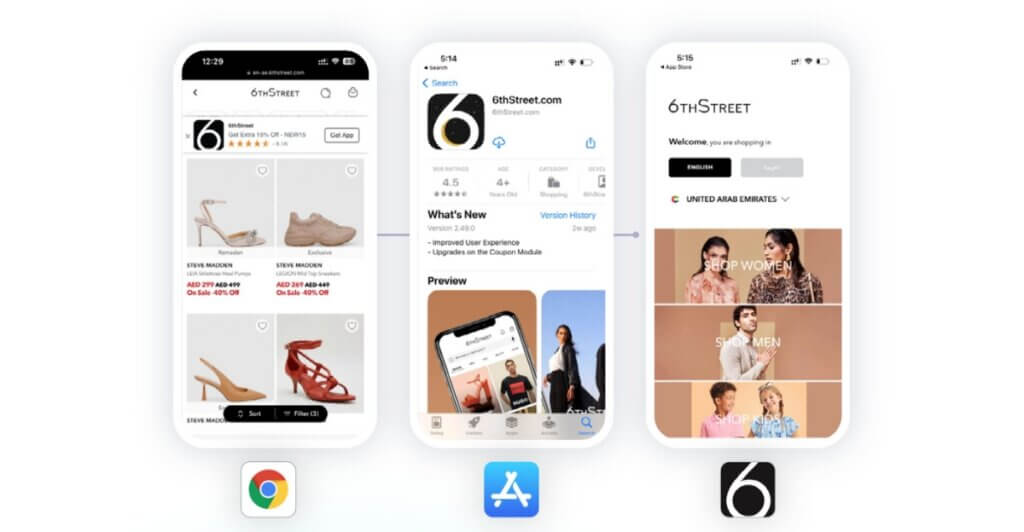
They offered these web visitors discounts for in-app orders, which prompted them to install the 6thStreet app. By adjusting their acquisition strategy and including deep links, 6thStreet saw a 60% growth in app installs month-over-month, 13% return on ad spend (ROAS) growth, and 70% drop in uninstall rate month-over-month.
Secondly, New Look, a leading omnichannel retailer offering clothing, footwear, and accessories. Their challenge was how to track users from mobile web and offline sources into its app. They turned to Journeys smart banners to acquire new customers and through Adobe Analytics could align tracking data which allowed them to optimize conversions and app adoption. The banner campaign banner led to a 113% increase in downloads and a 239% increase in app engagement.
They also used Branch QR codes to improve the connection between New Look’s mobile app and physical stores and encourage app downloads while purchase intent was high. New Look placed 400+ unique QR codes in their stores, which led to 16k+ installs in the first month alone.
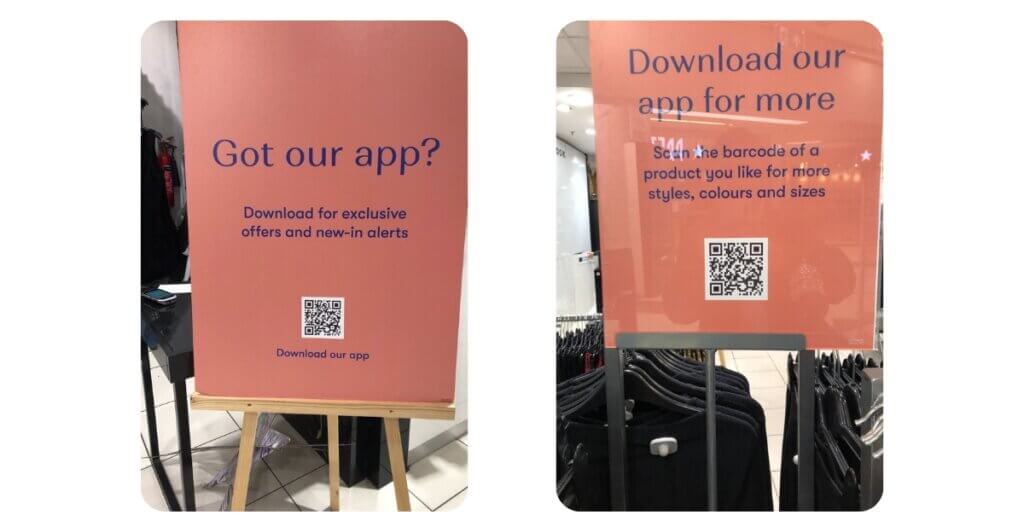
What are some best practice tips for deep linking?
Deep linking is all about the user experience. Some best practices are:
- Configure correctly. Deep links need to work on every channel, platform, and device. Make sure they have the right in-app configuration to support routing. Check that any redirect fallbacks have been set up correctly with the desired behavior — regardless of if the user has your app installed or not.
- Brand your links. Show users that you’re a credible source by customizing the URL to your specific brand or website. It helps users feel confident about where they’ll end up and improves click-through rates.
- Don’t go it alone. Keeping up with privacy changes, iOS and Android standards, and increasingly complex user journeys is a daunting task for any brand. Look to mobile linking platform (MLP) partners like Branch to help chart a path through industry changes and ensure compliance with the latest standards.
How can deep linking improve campaign measurement?
Marketers can leverage ad attribution and mobile analytics tools to gather insights into campaign performance, user engagement, and conversion rates. With a data-driven approach, marketers can optimize campaigns in real time and better understand how to improve results and ROI.
A great example of data-driven campaign optimization is Tonsser, Europe’s most popular social network for youth footballers. By getting more granular, automated targeting options from Branch’s MMP, the Tonsser team lowered their cost per install (CPI) by over 15% in the first two weeks of their revised user acquisition campaign on Snapchat, increased ad engagement by 1.5x, and generated a corresponding increase in in-app actions.
Deep links are an incredibly valuable way to not only attract new users but also keep them coming back. With the right mobile analytics and attribution tools, marketers can measure the performance of the deep links to uncover a user’s path to conversion — even when long and complex — to double down on the best-performing channels or campaigns as well as how to achieve dynamic mobile growth with increased acquisition, engagement, and conversions.
Learn more about why deep linking is essential for every company with an app.
About Mada Seghete
Mada co-founded Branch in 2014, masterminding the community-driven marketing strategy behind the company’s success. Born and raised in Romania, Mada came to the U.S. to study Electrical and Computer Engineering at Cornell University and then earned her Masters of Engineering and MBA from Stanford.
Mada regularly speaks about mobile growth at top global tech events, including Web Summit and SaaStr; she is the host of the How I Grew This podcast series and has been an instructor for a Growth Strategies course at Stanford Continuing Studies; and she invests in women founders as a partner for XFactor ventures.

